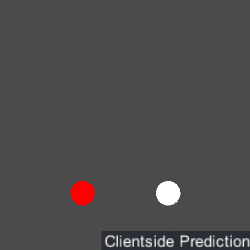RailgunNet: A Client/Server Network State-Synchronization Layer for Games
Alexander Shoulson, Ph.D. - http://ashoulson.com
Based loosely on the Quake 3 and Valve/Source networking models.
Supported Networking Tasks:
- Compact bit-packing of serialized entity data
- Delta-compression for entity data
- Network clock (frame number) sync
- Smoothing and interpolation support
- Clientside prediction support
- Scoping and packet size/QoS enforcement
- Reliable global events
- Unreliable entity/controller events
Wishlist:
- Code generation for new synced object states
Not Supported:
- Lag compensation for hit detection (see VolatilePhysics)
- Transport-layer network packet I/O (see MiniUDP)
Primary Design Features of Railgun:
- Transport-Agnostic. Railgun is not tied to the transport layer used for transmitting data over the internet. As long as a simple interface is upheld (essentially just sending/receiving unreliable byte[] arrays), Railgun can work with a number of network libraries.
- Low-Bandwidth. Railgun uses bit-packing and delta compression to keep bandwidth use at a minimum. Additional compression techniques (like Quake's Huffman Encoding) are also under consideration.
- Simplicity. Railgun is designed to be simple to read and debug. This library offers as minimal a feature set as possible to keep the total source small and readable. While Railgun could certainly benefit from features like code generation for custom object serialization, code simplicity takes a higher priority.
Caveats:
- Railgun is not a networking library. It provides no explicit support for UDP or TCP data transfer. Railgun is designed to sit right above such a library and use it to transmit and receive data that Railgun then interprets. For a simple UDP library that serves as a perfect companion to Railgun, see MiniUDP.


